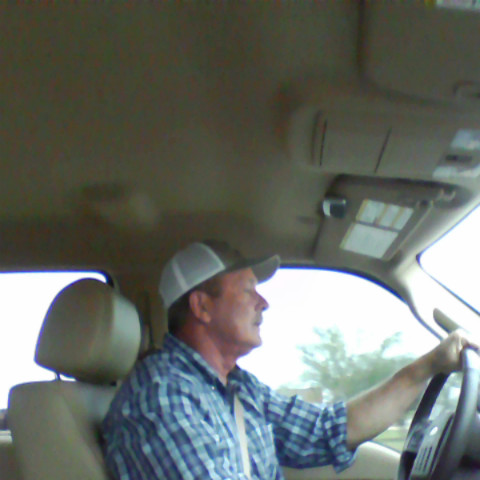Donald D Wilkes
age ~54
from Lehigh Acres, FL
- Also known as:
-
- Ronald D Wilkes
- Don Wilkes
- Donald Wilkers
- Donald Wilks
- Phone and address:
- 417 Naples Ave S, Lehigh Acres, FL 33974
Donald Wilkes Phones & Addresses
- 417 Naples Ave S, Lehigh Acres, FL 33974
- Valparaiso, IN
- Albuquerque, NM
- Lowell, IN
- Crown Point, IN
- Hobart, IN
Us Patents
-
Vehicular Suspension System
view source -
US Patent:42471273, Jan 27, 1981
-
Filed:Oct 23, 1978
-
Appl. No.:5/953843
-
Inventors:Donald F. Wilkes - Albuquerque NM
-
Assignee:Atlantic Richfield Company - Los Angeles CA
-
International Classification:B62D 5700
-
US Classification:280 285
-
Abstract:A wheelchair and rolling suspension system are supported by a pair of inclined, nested circular hoops. The hoops may be manually driven by lever arms accessable to the chair occupant. Moreover, the drive system permits the chair to negotiate straight lines, gradual and sharp curves, as well as to rotate about a vertical axis. The wheelchair is a two-wheel system having self-righting characteristics and is collapsible for storage and transportation. A seat assembly is articulatable between a vertically upright position and a fully reclined position. In addition, the wheelchair can function as a rocking chair.
-
Device For Converting Rotary Motion To Linear Motion
view source -
US Patent:49643142, Oct 23, 1990
-
Filed:Mar 13, 1989
-
Appl. No.:7/322010
-
Inventors:Donald F. Wilkes - Albuquerque NM
-
International Classification:F18H 116
-
US Classification:744248C
-
Abstract:An apparatus for converting rotary motion to linear motion includes a centrally located screw member and a concentrically positioned outer member that surrounds the screw member but is spaced therefrom in order to define an annular space between the outer member and the screw member. A plurality of planet assemblies are positioned around the screw member and within the annular space. Each planet assembly is comprised of a roller that has a plurality of annular grooves extending circumferentially around its exterior surface. Each pair of adjacent grooves define a ridge therebetween whereby each roller has a plurality of spaced annular ridges extending circumferentially around its exterior surface. The ridges on the rollers engage the helical thread on the screw member as well as annular grooves on the inner surface of the outer member. The outer diameter of the planet assemblies is at least equal to the outside diameter of the screw member.
-
Motion Damper
view source -
US Patent:39602478, Jun 1, 1976
-
Filed:Jun 20, 1975
-
Appl. No.:5/588626
-
Inventors:Donald F. Wilkes - Albuquerque NM
-
Assignee:Hosmer/Dorrance Corporation - Campbell CA
-
International Classification:F16F 706
-
US Classification:188 1B
-
Abstract:A damping apparatus for retarding motion of a movable body is disclosed. The apparatus has a damper unit with at least two rollers having resilient peripheral surfaces. The rollers are free wheeling relative to one another and roll along a guide in contact with opposite guide surfaces. The damper unit further includes a carrier rotatably carrying the rollers. The carrier is operably connectable to the movable body such that a force is applied to the carrier in response to motion of the body to urge the rollers against the guide surfaces at an intensity which progresses in relation to the magnitude of the applied force to resiliently compress the resilient peripheral surfaces against the guide surfaces as the rollers rotationally travel therealong, to retard motion of the body.
-
Prosthetic Knee Joint
view source -
US Patent:40054969, Feb 1, 1977
-
Filed:Jun 13, 1975
-
Appl. No.:5/586544
-
Inventors:Donald F. Wilkes - Albuquerque NM
-
Assignee:Hosmer/Dorrance Corporation - Campbell CA
-
International Classification:A61F 104
A61F 108 -
US Classification:3 27
-
Abstract:A prosthetic knee joint having a femoral member and a tibial member each of which is provided with a bearing surface. The bearing surface of the tibial member supports the bearing surface associated with the femoral member such that flexion between the tibial member and the femoral member causes the respective bearing surfaces to roll relative to one another. Rollers, cam surfaces and guide slots are provided to ensure the retention of the proper relationship for this rolling contact between the tibial bearing surface and the femoral bearing surface. The knee joint includes a mechanical brake which produces a brake force that increased with flexure between the tibial member and the femoral member. The brake includes a resilient deformable element which transmits a brake applying force to a brake shoe which is operable along an axis generally perpendicular to the direction in which the force is applied. Hyperextension of the knee joint is mechanically limited and a torsion rod accommodates torsional motion between the knee joint and a lower leg to which it may be attached.
-
Process For Cleaving Crystalline Materials
view source -
US Patent:42443482, Jan 13, 1981
-
Filed:Sep 10, 1979
-
Appl. No.:6/074360
-
Inventors:Donald F. Wilkes - Albuquerque NM
-
Assignee:Atlantic Richfield Company - Los Angeles CA
-
International Classification:B28D 132
-
US Classification:125 23R
-
Abstract:A process for cleaving boules of single crystal materials such as silicon or germanium into thin wafers. The process comprises creating an inward-directed radial stress concentration completely around a boule which intersects its crystallographic plane of minimum bond strength; and subsequently, triggering the cleavage of a thin wafer from the boule via a shock wave applied normal to its crystallographic plane of minimum bond strength.
-
Suspension System
view source -
US Patent:42615895, Apr 14, 1981
-
Filed:Dec 13, 1978
-
Appl. No.:5/969087
-
Inventors:Donald F. Wilkes - Albuquerque NM
-
Assignee:Atlantic Richfield Company - Los Angeles CA
-
International Classification:B62D 5700
-
US Classification:280 285
-
Abstract:A self-righting rolling suspension system is disclosed which has two ground contact zones and has self-righting stability in perpendicular planes, one of which includes the contact zones and one of which is perpendicular thereto. The system includes rolling support members that may be discs, annuli, cones or similar bodies of revolution. With the preferred orientation of the rolling supports, an effective radius several times the actual radius of the rolling support results. A self-adjusting differential is also obtained from one application of the principles. Shock absorbing and braking assemblies can also be incorporated in the system.
-
Wheelchair
view source -
US Patent:43244149, Apr 13, 1982
-
Filed:Jul 29, 1980
-
Appl. No.:6/173440
-
Inventors:Donald F. Wilkes - Albuquerque NM
-
Assignee:Atlantic Richfield Company - Los Angeles CA
-
International Classification:B62M 106
B62M 116
B62M 306 -
US Classification:280242WC
-
Abstract:A wheelchair and rolling suspension system are supported by a pair of inclined, nested circular hoops. The hoops may be manually driven by lever arms accessable to the chair occupant. Moreover, the drive system permits the chair to negotiate straight lines, gradual and sharp curves, as well as to rotate about a vertical axis. The wheelchair is a two-wheel system having self-righting characteristics and is collapsible for storage and transportation. A seat assembly is articulatable between a vertically upright position and a fully reclined position. In addition, the wheelchair can function as a rocking chair.
-
Device For Adapting Continuously Variable Transmissions To Infinitely Variable Transmissions With Forward-Neutral-Reverse Capabilities
view source -
US Patent:56327030, May 27, 1997
-
Filed:Aug 4, 1995
-
Appl. No.:8/511599
-
Inventors:Donald F. Wilkes - Albuquerque NM
James W. Purvis - Albuquerque NM
A. Keith Miller - Albuquerque NM -
Assignee:Sandia Corporation - Albuquerque NM
-
International Classification:F16H 926
F16H 3702 -
US Classification:475211
-
Abstract:An infinitely variable transmission is capable of operating between a maximum speed in one direction and a minimum speed in an opposite direction, including a zero output angular velocity, while being supplied with energy at a constant angular velocity. Input energy is divided between a first power path carrying an orbital set of elements and a second path that includes a variable speed adjustment mechanism. The second power path also connects with the orbital set of elements in such a way as to vary the rate of angular rotation thereof. The combined effects of power from the first and second power paths are combined and delivered to an output element by the orbital element set. The transmission can be designed to operate over a preselected ratio of forward to reverse output speeds.
Resumes

Donald Wilkes
view source
Donald Wilkes
view source
Donald Wilkes
view source
Donald Wilkes
view source
Donald Wilkes
view sourceIsbn (Books And Publications)

Teen Guide Job Search: Ten Easy Steps to Your Future
view sourceAuthor
Donald Wilkes
ISBN #
0595396968
Name / Title
Company / Classification
Phones & Addresses
4174-VFW MENS AUXILIARY, INC
25 Homestead Rd S, Lehigh Acres, FL 33936
PO Box 304, Lehigh Acres, FL 33970
417 Naples Ave S, Lehigh Acres, FL 33974
PO Box 304, Lehigh Acres, FL 33970
417 Naples Ave S, Lehigh Acres, FL 33974
Wikipedia

Rolamite
view sourceInvented by Sandia engineer Donald F. Wilkes and patented by him on June 24, 1969 these devices use a stressed metal band and counter rotating rollers ...
Flickr
Myspace

Donald Wilkes
view sourceBirthday:
1914
Googleplus

Donald Wilkes

Donald Wilkes
Youtube
Classmates

Donald Wilkes
view sourceSchools:
Polytechnic High School Los Angeles CA 1951-1955
Community:
Carol Bennett, Mary Smith

Donald Wilkes
view sourceSchools:
Osborne High School Marietta GA 1968-1972
Community:
John Neff, Chris Schnick

Donald Caine (Wilkes)
view sourceSchools:
MaKenzie High School Detroit MI 1980-1981
Community:
Gary Hoffman, Rick Edds

Donald Wilkes
view sourceSchools:
Cave City High School Cave City AR 1963-1967
Community:
Pam Grossi, Kathy Gay, Becky Wooldridge

Polytechnic High School, ...
view sourceGraduates:
Donald Wilkes (1951-1955),
Doris Porter (1936-1940),
Jane Egan (1946-1950),
James Stouffer (1981-1985),
David Glamuzina (1972-1976),
Paul Castaneda (1995-1999)
Doris Porter (1936-1940),
Jane Egan (1946-1950),
James Stouffer (1981-1985),
David Glamuzina (1972-1976),
Paul Castaneda (1995-1999)

East Side High School, Ne...
view sourceGraduates:
Donald Wilkes (1951-1955),
Marcella Camacho (1983-1987),
Jose Cruz (1999-2003),
Anthony Ferraro (1984-1988),
Katherine Yingst (1973-1977)
Marcella Camacho (1983-1987),
Jose Cruz (1999-2003),
Anthony Ferraro (1984-1988),
Katherine Yingst (1973-1977)

Midwood High School 405, ...
view sourceGraduates:
Nausheen Pasha (1983-1987),
Donald Wilkes (1994-1998),
Nadine Galindo (1984-1987),
Raymond Muscat (1996-2000),
Nolan Jackson (1998-2002)
Donald Wilkes (1994-1998),
Nadine Galindo (1984-1987),
Raymond Muscat (1996-2000),
Nolan Jackson (1998-2002)

Torrington High School, T...
view sourceGraduates:
Donald Wilkes (1966-1970),
Jeanette Weickum (1962-1966),
Donald Farrier (1970-1974),
Donald Morgan (1981-1985)
Jeanette Weickum (1962-1966),
Donald Farrier (1970-1974),
Donald Morgan (1981-1985)
Plaxo

Donald Wilkes
view sourceCity of Industry, California, USA
Get Report for Donald D Wilkes from Lehigh Acres, FL, age ~54













